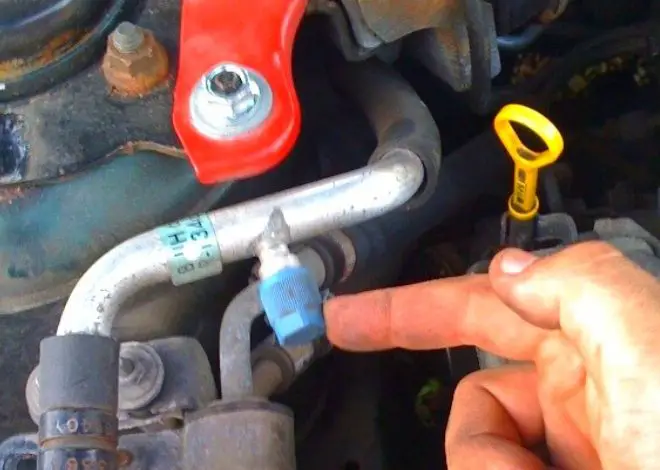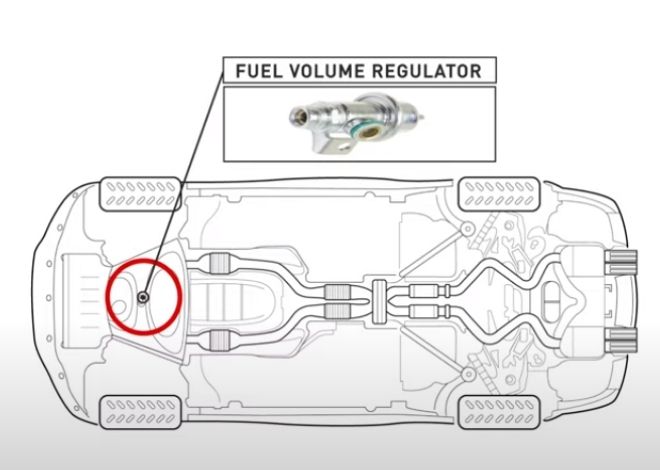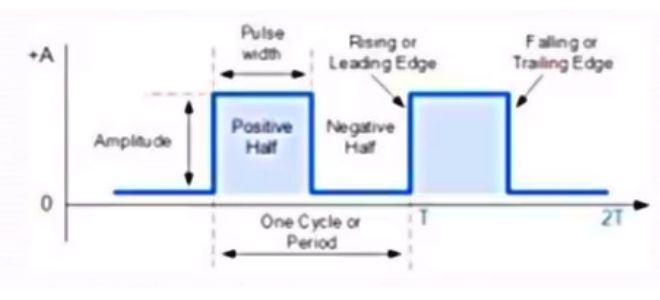Last Updated on May 21, 2025
What Is the P0002 Code?
The P0002 code is a generic powertrain diagnostic trouble code (DTC) that signals a problem within your vehicle’s fuel volume regulator control circuit. Specifically, it refers to “Fuel Volume Regulator Control Circuit Range/Performance.” This code is commonly found in vehicles equipped with electronically controlled fuel systems and can trigger the Check Engine Light (CEL) on your dashboard.
If your OBD-II scanner shows P0002, it means the Engine Control Module (ECM) has detected an irregular voltage or resistance in the circuit responsible for regulating fuel volume to the engine. This issue can affect fuel efficiency, engine performance, and even emissions.
🔍 Want to know more about DTC meanings? Check out our car diagnostic codes list for a detailed breakdown.
Additionally, the P0002 code often coincides with other fuel system-related codes like P0001, P0003, and P0004.
Common Causes of the P0002 Code
Although the P0002 code is directly linked to the Fuel Volume Regulator (FVR), it can be triggered by several related components. Below are the most common causes:
- Faulty fuel volume regulator valve (FVR): This valve may be stuck, worn out, or not receiving the proper voltage from the ECM.
- Defective fuel pump: If your fuel pump is underperforming or malfunctioning, it can lead to improper fuel regulation.
- Issues with the Fuel Pressure Regulator: Corrosion or damage in the electrical connectors or poor voltage supply can cause irregular fuel pressure.
- Damaged wiring harness or poor electrical connections: Wiring to the regulator may be broken or loose, leading to inconsistent voltage readings.
- Faulty Powertrain Control Module (PCM): The PCM may misinterpret sensor data or fail to regulate the fuel system correctly.
- Problems with the Fuel Pump Control Module (FPCM): You may also encounter related errors like the U0109 code, which involves lost communication with the FPCM.
- Clogged fuel filters or contaminated fuel injectors: These can disrupt proper fuel delivery, triggering the P0002 code.
🎥 Need a quick visual guide? Watch this helpful YouTube video on P0002 diagnosis for a mechanic’s perspective.
Symptoms of the P0002 Code
If your vehicle throws a P0002 code, you may notice several distinct signs that indicate a fault in your fuel regulation system. Here are the common symptoms:
- Check Engine Light (CEL) appears on the dashboard.
- Poor engine performance: Rough idling, stalling, or hesitation during acceleration.
- Reduced fuel economy: A failing FVR or related component can result in excessive or insufficient fuel delivery.
- Black or white exhaust smoke: Incomplete combustion can lead to odd-colored emissions.
- Engine may fail to start: A severe disruption in fuel regulation can prevent the engine from starting.
- Damage to the catalytic converter: If unburned fuel reaches the exhaust system, it can cause long-term damage.

In many cases, these symptoms may develop gradually. If ignored, they could lead to costly engine or exhaust system repairs. That’s why resolving the P0002 code quickly is essential for your vehicle’s long-term health.
Diagnosing the P0002 Code
Diagnosing the P0002 code requires a methodical approach. You’ll need a reliable OBD2 scanner, a digital multimeter, and some mechanical knowledge. Here’s a step-by-step guide:
Step 1: Scan the Vehicle
Connect an OBD-II scanner to your vehicle’s diagnostic port. Check for P0002 and related codes (P0001–P0004, U0109, etc.). Clear the codes and take a test drive to see if the code reappears.
Step 2: Visual Inspection
Inspect the wiring harness connected to the Fuel Volume Regulator and Fuel Pump Control Module. Look for burnt, frayed, or disconnected wires.
Step 3: Measure Current and Resistance
Using a multimeter, check the solenoid resistance in the FVR. It should read between 30 and 80 milliamps (mA). If it reads outside that range, the solenoid may be damaged and need replacing.
Learn more about solenoid issues that may affect fuel systems.

Step 4: Check the Fuel Pressure
Use a fuel pressure gauge to measure the pressure in the fuel rail. A drop in pressure could indicate a blocked fuel filter, a weak pump, or a leaky injector.
Step 5: Inspect the ECM/PCM
If all mechanical parts pass inspection, use advanced diagnostics to evaluate your Engine Control Module (ECM) or Powertrain Control Module (PCM) for internal faults.
Fixing and Preventing the P0002 Code
Resolving the P0002 code depends on the root cause. Here are proven solutions mechanics follow to clear the code and prevent it from returning.
🔧 How to Fix the P0002 Code
- Replace or repair the Fuel Volume Regulator Valve: If it fails the resistance test, it must be replaced.
- Fix damaged wiring: Repair or replace any broken wires or corroded connectors in the fuel system circuit.
- Clean or replace fuel filters: A clogged filter may limit fuel flow, triggering the code.
- Repair or replace the fuel pump: If pressure is too low or inconsistent.
- Reprogram or replace the ECM/PCM: If it’s confirmed that the controller isn’t processing fuel signals correctly.
🛠 Pro Tip:
Always reset the fault code after making repairs, then perform a road test. If the P0002 code doesn’t return, your fix was successful.

💸 Cost to Fix the P0002 Code
Fixing this issue can range from $100 to $300, depending on the severity:
- Basic diagnostics and wiring repair: $100–$150
- Fuel pump or regulator replacement: $200–$300+
- ECM replacement or programming: $300–$600 (if necessary)
⚠ If the catalytic converter is damaged, it may cost over $1,000 to replace. Preventing further issues by addressing the P0002 code early is crucial.
Final Thoughts on the P0002 Code
When your dashboard lights up with a Check Engine Light and the P0002 code appears on your scanner, don’t ignore it. This fault points to a fuel system irregularity that can disrupt your engine’s performance, fuel economy, and emissions output. By using an OBD2 scanner, running proper tests, and inspecting critical components like the fuel pump and regulator, you can resolve this issue before it leads to more costly repairs.
If you’re unsure about conducting these repairs yourself, it’s always best to consult a certified mechanic. Prompt action can extend the life of your fuel system, engine, and exhaust system.
Related Guides You Might Like:
- P0001 Code: Fuel Volume Regulator Control – Open Circuit
- P0003 Code: FVR Control Circuit Low
- P0004 Code: FVR Control Circuit High
- U0109 Code: Lost Communication With Fuel Pump Control Module
- How to Test a Car Battery With a Multimeter
Frequently Asked Questions (FAQs)
1. What does the P0002 code mean?
The P0002 code refers to a malfunction in the Fuel Volume Regulator Control Circuit, indicating a range or performance issue in the system that manages fuel flow to the engine.
2. Can I drive with the P0002 code?
Driving with a P0002 code is not recommended as it can lead to poor engine performance, reduced fuel economy, and damage to vital components like the catalytic converter.
3. How much does it cost to fix the P0002 code?
Fixing the P0002 code usually costs between $100 and $300, depending on whether the issue is with wiring, the fuel volume regulator, or the ECM.
4. What are the main symptoms of the P0002 code?
Common symptoms include the check engine light turning on, poor engine performance, decreased fuel economy, black or white smoke from the exhaust, and engine starting issues.
5. What tools do I need to diagnose the P0002 code?
You’ll need an OBD2 scanner, a digital multimeter for checking resistance and voltage, and possibly a fuel pressure gauge to test fuel delivery accuracy.
Kevin Nicholas is an automotive technician who is a genius at software and hardware-related issues. He manually tested more than a hundred OBD scanners and gave his honest opinion on whether the device was worth the money or not. His in-depth OBD review articles help people choose the right product, whether it is a European, American, or Asian vehicle. He completed his Automotive Specialized Training Course at Universal Technical Institute and has more than 15 years of experience in the field.
